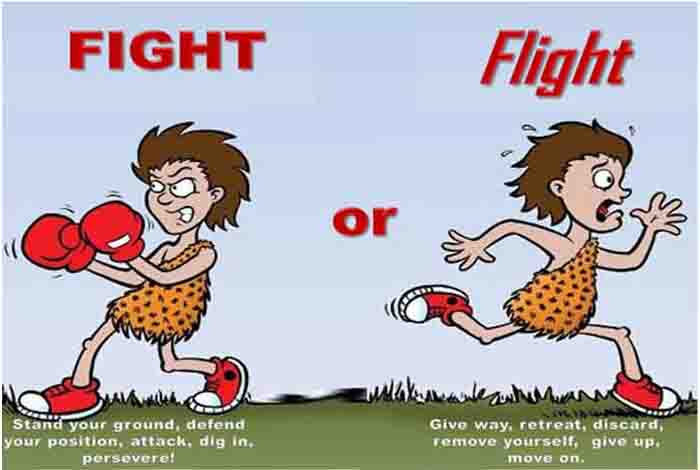
They can come from nowhere and suddenly peak, making you tremble and causing ragged breaths. Panic attack occurs when your body is in the hold of fear. However, what stimulates the fear and how frequently you get into the grip of this fear depends on your personality. The trigger is different from one person to another but what stays the same is the experience and the fact that it is prevalent among human beings. Most people will get a panic attack at some point of time in their life as it is an adaptive form of response that has come through evolution.
There is nothing unusual about panic attacks as anyone could have a panic attack. Most people will have at least one or two panic attacks over their lifetime. Panic attacks aren’t a problem when they are just one or two but if they occur frequently, they can pose a problem and may lead to panic disorder.
There is a difference between getting panic attacks and having a panic disorder. The experience as already explained above is a part of the evolution.
What Exactly Is a Panic Attack?
As defined by Mayo Clinic, panic attack is an unexpected occurrence of an episode of too much fear, which causes many physical reactions, although there is no real danger or cause for the same. If you have experienced a panic attack, you might be knowing what we are talking about. You feel it’s there to make you feel horrible. Sometimes, it can last for 10 minutes and many times, episodes of panic attacks can come and go intermittently for a duration of several hours. [1]
In 2011, scientists at Southern Methodist University said that people go through an hour of physiological disturbance before a panic attack kicks in. A full-blown panic attack has four or more symptoms, whereas a limited symptom attack [2] has three or less. These include fear of going mad, fear of dying, increase in heart rate, sense of detachment, dizziness and chills.
During a panic attack, the sympathetic nervous system [3] gets activated, which is responsible for flight or fight response. The parasympathetic nervous system is in the resting stage. It is the cause for the rise in blood pressure along with increase in breath rate and heart rate during a panic attack. Hyperactivity sets in some parts of the brain, particularly the amygdala [4] and periaqueductal gray, that control the responses of brain to emotions like fear. The body utilizes energy for flight or fight, which is why people feel tired after having a panic attack.

What is a Panic Disorder?
When people have unexpected and reoccurring panic attacks and are also fearful that another panic attack may hit them then they are said to have panic disorder . Around 2-3% of Americans experience panic disorder at some point of time in their lives. People having panic disorder are fearful of fear. There is a conceived notion that those symptoms are dangerous and that they will die or go crazy maybe. A person having a panic attack can move on from his situation but one having panic disorder cannot overcome his emotions.
Reasons for the Occurrence of Panic Attacks
A panic attack can get triggered by any emotionally or physically disturbing event. It could be something like speaking in public, rash driving, thinking about anxious things like stress (work or financial). The treatment is specific, which varies from person to person. The reason could be genetic, environmental or stress related. This implies that some people are more likely than others to have a panic attack.
An important point to be noted is that a panic attack may not necessarily have a causative agent. Panic experience may be similar but what causes the panic attack could vary from people to people.
Panic attacks can be explained on the basis of evolution. Panic is a type of fear and in the form of adaptation, this fear has been passed on to us by our ancestors through genes. It is much obvious that a human, who was fearful of the tiger had much more chances of survival than ones, who moved out to tame it. Panic attacks are a response to a fearful situation – a sort of threatening – but may not be very dangerous as something like tiger.
The idea is that panic attacks happen to protect us, so the response is adaptive. Now, the body reacts in a similar way to threat whether it is facing the dangerous tiger or participating in a public event. Unfortunately, there are no different responses for fear. So, the body’s response to a specific situation may at times seem disproportionate, but since the body is considering it as just a threat, it exhibits similar intense emotions.
This response has helped humans remain above other species in the food chain. We are wired to protect ourselves socially and physically. That is why a mere thought of failure in social situations can trigger a sense of fear.

Stopping a Panic Attack
There’s no set parameter for stopping panic attacks. However, if you are doing physical activity regularly, you will be able to relieve yourself of anxiety. Also, you must limit the consumption of caffeine to avoid panic attacks. Cognitive Behavioral Therapy (CBT) [5] is the best type of treatment for panic attacks. The therapist, in CBT, tries to change the response to the fear. It instills a feeling in patients that they can overcome fear as they gradually become able to identify situations that trigger fear in them.
While treating panic disorder, people are made to believe that panic disorder may be uncomfortable, but is certainly not dangerous. It’s not something to be fearful of and you should not go berserk over getting rid of it.




